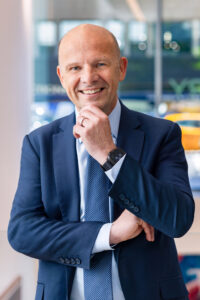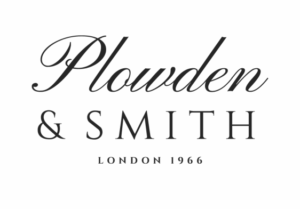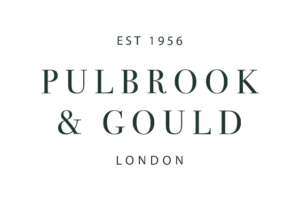Martin Wilson, CEO, Phillips
You’re almost six months into your new role as CEO at Phillips. What do you see as the biggest challenge in the year ahead?
My appointment has coincided with a moment of unprecedented change in the art market. While the top end of the market continues to be dominated by masterpiece works in the millions of pounds, we are also seeing the beginnings of a change in the demographic of our buyers, with the emergence of a new generation of younger collectors whose tastes are different from those of their parents. This generation is interested in living artists and experiences. As a new CEO, a change of this magnitude presents an exciting strategic opportunity. And, as a modern auction house with a strong contemporary brand and a reputation for innovation, Phillips is extremely well placed to take advantage of the change.
You also set up the Art Lawyers’ Association and are co-chair; how do you divide your time between all these demands?
When I began my career there were very few art lawyers and art law was not really recognised as a legal discipline in its own right. Over the years, however, we have seen growing numbers of lawyers practising in this field, primarily because it is a fascinating area of the law – involving questions of authenticity, forgery, restitution and copyright. Lawyers have also become increasingly influential in advising collectors. I wrote my book Art Law and the Business of Art and subsequently set up the Art Lawyers Association because I felt that an association of this kind could provide thought leadership and dialogue in areas of law that touch on art and culture. Those connections and the legal and ethical discussions around art remain highly relevant to my work in the art market as CEO of Phillips. The association has grown very rapidly and two years after its creation numbers nearly 500 members. While my role as CEO absorbs the vast majority of my time, I am lucky to be able to remain involved in the association because we have a management team of brilliant art lawyers at the Art Lawyers Association who share the workload.
Phillips has focused on Contemporary & Modern art, as well as jewellery, watches, design and photography. What other specialisms would you like to include in your calendar?
Phillips’ strength, and what distinguishes it from other auction houses, is that its offering is very focused and consistent with its contemporary brand. It is known for being on trend and often creating the trend. But, while maintaining that focus, we are constantly introducing new ideas and experiences to our calendar, depending on where we see demand. Good examples are the recent South Asian art “Crossing Borders” exhibition and last year’s David Hockney prints sale. We have also experimented with other platforms such as Dropshop – our digital platform offering limited-edition releases of primary market art and objects in partnership with the artists, collaborators, and brands defining contemporary culture. Our aim is always to be connected with what is most current in art and culture.
Like the fair, you are based in Berkeley Square. What makes it a destination location?
Berkeley Square is the heart of Mayfair, which has long been a hub of art, culture, and commerce. Our Berkeley Square saleroom is unique amongst London auction houses in that it was designed from the outset as a contemporary art space. As a result, it is a spacious light filled space – ideal for exhibiting and selling art. It sits at the top of Berkeley Square and its open design is intended to welcome visitors and passers-by. I encourage everyone to drop by to see what we have on view – or even to bid in our sales. Art is for everyone and, while the headlines focus on the expensive artworks, much of what we sell is often surprisingly affordable. So, if you are passing, please do drop by!
What would be your one piece of advice to anyone thinking of working in the art market?
It’s an exciting time to be working in the art market. It is a time where tastes are changing and there is a willingness, in a world which is sometimes seen as quite traditional, to explore new ideas and approaches. Technology is changing the way we experience art, communicate about art, and how we transact in art. This provides huge opportunities to young, innovative, and digitally literate people who are curious and open to change.
At the same time the art market continues to be built on relationships and artistic and historical knowledge. The more you see, ask, and absorb, the better you’ll be able to understand what drives collectors and how value is created.
So, my advice to anyone thinking of joining the art world would be to educate themselves about art but also seek to understand how economics, technology and human behaviour are going to reshape the market.
If you could own one work, what would that be?
I am lucky enough to see so much extraordinary art pass through our saleroom in Berkeley Square. I appreciate and learn something from every artwork that I see. I was lucky enough to have been at Phillips to experience and play a part in the sale of the Basquiat Head from the Collection of Yusaku Maezawa for US$85,000,000. This would be a wonderful work to own – although at eight foot tall and sixteen feet wide it would require a change of home!
Tell us something unusual/unexpected about yourself.
Sports is my escape. I am an avid back country skier, having grown up in Switzerland. I am never happier than in the mountains in deep powder snow. When I am not skiing, I enjoy playing football with the veteran team in my home town of Lewes in Sussex.






